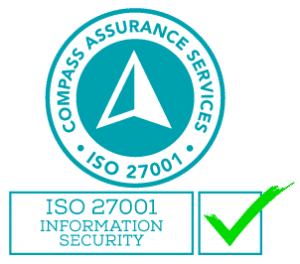There’s no getting around the fact that business security is always going to be an uphill battle. It requires time and effort, and often results in sacrifices being made. If a low-risk breach were to occur, there’s a good chance that it won’t affect the bottom line.
But there’s no excuse for taking that risk — and especially not when it comes to implementing an effective Identity and Access Management system. This will ensure greater visibility and accountability across your network, ensuring better protection for your data and easier tracking of user activity.
This in-depth guide provides an overview of IAM, its benefits, and best practices for implementing an effective IAM solution.
What does Identity and Access Management mean?
Identity and Access Management (IAM) is a form of security that enables organisations to securely manage the access of their users to the resources they need. It is a critical component of any cyber security strategy, as it enables organisations to protect their data, systems, and networks from unauthorised access. It also allows admins to define and manage user access rights, monitor user activities, and enforce access policies.
By leveraging IAM, your business can ensure that only authorised users are able to access the resources they need, while keeping unauthorised users out. It also admins and security teams to track user activity and detect any suspicious activity.
How does IAM work?
IAM is typically implemented through a combination of policies, processes, and technologies. The policies define the access control rules that must be followed, while processes are used to implement the policies. The technologies include multi-factor authentication (MFA), single sign-on (SSO), and access control lists that define who is allowed to access what.
MFA: Users are required to provide two or more pieces of credentials to verify their identity. This can include the username and password, a one-time code from an authentication app, or a fingerprint.
SSO: Allows users to log in to all their accounts with a single ID, and then access those services without having to re-enter their authentication details again.
Benefits of IAM
The benefits of having an effective IAM system are numerous. Firstly, it offers improved security for the organisation’s data and resources, as the system can restrict access to only authorised users. This helps to prevent data breaches and other security risks, while also providing an audit trail of user activity.
It simplifies the authorisation process, allowing users to quickly and easily gain access to the resources they need. This will save time and money, as well as improve the user experience.
IAM software can also help organisations to meet compliance requirements. For example, if an organisation needs to comply with GDPR or other industry regulations, IAM can provide the necessary tools and safeguards to ensure that only authorised users have access to the necessary data and resources. This will help your business avoid hefty fines and other penalties.
Furthermore, IAM also enables organisations to better manage their resources. With IAM, your business can set limits on how much data or other resources an individual user can access, ensuring that the resources are managed effectively. This improves operational efficiency and productivity, while also reducing costs.
What does an IAM strategy include?
The goal of an IAM strategy is to identify and protect the data, systems, and resources that are critical to your business’s operations. It includes an assessment of the app inventory, user constituencies, and IAM software, as well as a risk assessment of the data, systems, and resources that need to be protected. The IAM strategy must also include policies and procedures for user authentication and authorisation, as well as a plan for how your business will update and maintain its IAM software.
Classify the applications used across your business. These will generally fall into standard web apps, or legacy apps. Identifying the apps that need to be managed with IAM will help you choose the software technology and policies.
Consider the users across your business. Identify who needs to access what information; this may include clients, partners, and third-party vendors, as well as employees. A directory will help you build a database of identity data. This way, you can easily keep track of the level of access credentials your users are assigned.
Identity and governance admin tools will manage the user identities, track authorisations, and help with provisioning. You may find you need to implement privileged access management tools to control access for accounts with higher levels of access. Remote identity proofing may also be crucial if your employees work remotely, or if clients need access to any accounts.
Users should only be given authorisation to access accounts, resources, and data that are key to performing their required tasks. You may need to consider implementing a zero-trust policy alongside your IAM strategy to assist with this.
The components of IAM are essential for ensuring that your business is able to protect their IT systems and data from unauthorised access. Without proper policy-based control and privileged accounts, organisations would be unable to restrict access to their systems, making them vulnerable to cyber-attacks.
MFA provides an additional layer of security, making it more difficult for unauthorised users to access systems and data. Finally, identity and access governance ensures that user accounts and access rights are properly managed and monitored.
IAM needs to encompass:
- Authentication: Validating a user’s identity with a system.
- Authorisation: Determining what actions a user can take based on their role, permissions, and permissions.
- Compliance: Verification of an organisation’s policies and procedures.
- Governance: Provision of oversight within the organisation.
IAM best practices
The first step in setting up an IAM system is to create a process for tracking user sign-ins. This includes logging all successful and unsuccessful attempts at access, as well as recording the time and date of each attempt. Logging user sign-ins will help organisations identify potential security threats and vulnerabilities.
All staff should be trained on the IAM system, including how to access resources, how to use secure passwords, and how to identify and report suspicious activity. Staff training is an essential part of IAM best practices, as it helps ensure that users understand the IAM system, policies, and restrictions.
Other important IAM practices include:
- Require multi-factor authentication for all accounts.
- Use unique usernames and passwords of at least 12 characters for each account, and change them regularly.
- Use multi-factor authentication for high-value assets, such as accounts with financial records or client data.
- Ensure all user accounts have the appropriate permissions.
- Restrict the use of guest accounts.
- Use role-based access control for granular permissions.
- Use role groups for centralised authority.
- Implement audit trails.
- Implement policy enforcement.
- Remove accounts when they are no longer needed, e.g. an employee leaves the company.
Should you be using IAM?
All businesses that require their employees to digitally access data and resources to do their jobs should implement an IAM system. It improves visibility, helping your security team quickly spot any suspicious or unusual behaviour, and ensures your users cannot access sensitive data that they don’t need to do their jobs.
Controlling which users have access to data and applications is key to ensuring that data remains safe. It also ensures accountability; in the event that data is leaked or stolen by an insider, you can quickly narrow down the list of suspects and pinpoint how the data was removed.
IAM also helps businesses to comply with industry regulations and standards. It ensures that any user who has access to critical data or applications is properly authenticated and authorised. This helps businesses to meet their legal and regulatory requirements, as well as best practices.
Implement IAM with expert help
By implementing an IAM solution, your business will benefit from increased security and improved compliance, and ensure that you are effectively managing user access rights, monitoring user activities, and enforcing access policies. An IAM solution will also improve your overall security posture and reduce the risk of a data breach.
The cyber security specialists at Steadfast Solutions can help you develop an IAM strategy, pinpoint the right software and tech for your needs, implement the system, and fully manage your IT environment for maximum protection and performance. Talk to them today and ensure your data and resources are in safe hands.




